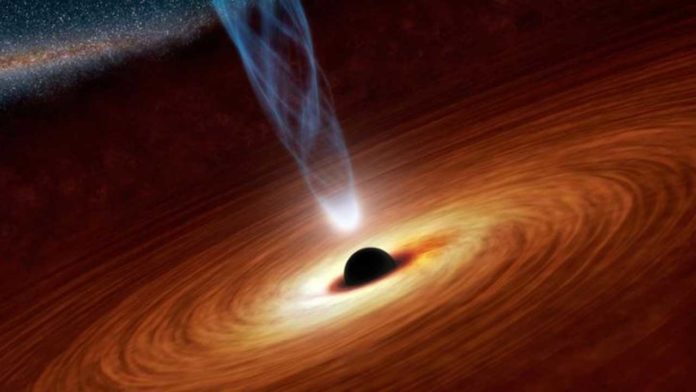While black holes are mysterious and exotic, they are also the simplest solutions to Einstein’s general relativity field equations.
Black holes are characterized by three physical quantities: mass, spin, and charge. As black holes don’t have any hairy attributes, they are considered “no hair.”
Dr. Lior Burko of Theiss Research, in collaboration with Professor Gaurav Khanna of the University of Massachusetts Dartmouth and the University of Rhode Island, alongside his former student Dr. Subir Sabharwal discovered that a special kind of black hole violates black hole uniqueness, the so-called “no hair” theorem.
They studied extremal black holes that are “saturated” with the maximum charge or spin.
They found a quantity that can be constructed from the spacetime curvature at the black hole horizon moderated and quantifiable by a distant observer. Since this amount relies upon how the black hole was formed, and not simply on the three classical attributes, it violates black hole uniqueness.
This quantity has gravitational hair that is measurable by observatories like LIGO and LISA. This new hair structure follows the development of a similar amount found by Angelopoulos, Aretakis, and Gajic in the context of a simpler “toy” model using a scalar field and spherical black holes. It extends it to gravitational perturbations of rotating ones.
Dr. Lior Burko of Theiss Research said, “This new result is surprising because the black hole uniqueness theorems are well established and in particular their extension to extreme black holes. There has to be an assumption of the theorems that are not satisfied, to explain how the theorems do not apply in this case.”
Scientists also considered previous work by Aretakis that found that even though external perturbations of extreme black holes decay as they also do for regular black holes, along the event horizon, specific perturbation fields evolve in time indefinitely.
Burko said, “The uniqueness theorems assume time independence. But the Aretakis phenomenon explicitly violates time independence along the event horizon. This is the loophole through which the hair can pop out and be combed at a great distance by a gravitational wave observatory.”
“Unlike other work that found hair in black hole scalarization, in this work, we were working with the vacuum Einstein theory, without additional dynamical fields that modify the theory and which may violate the Strong Equivalence Principle.”
This is generated by using very intensive numerical simulations that involve using dozens of the highest-end Nvidia graphics-processing-units (GPUs) with over 5,000 cores each in parallel.
Prof. Khanna said, “Each of these GPUs can perform as many as 7 trillion calculations per second; however, even with such computational capacity, the simulations look many weeks to complete.”
Journal Reference:
- Lior M. Burko et al. Scalar and gravitational hair for extreme Kerr black holes. DOI: 10.1103/PhysRevD.103.L021502
